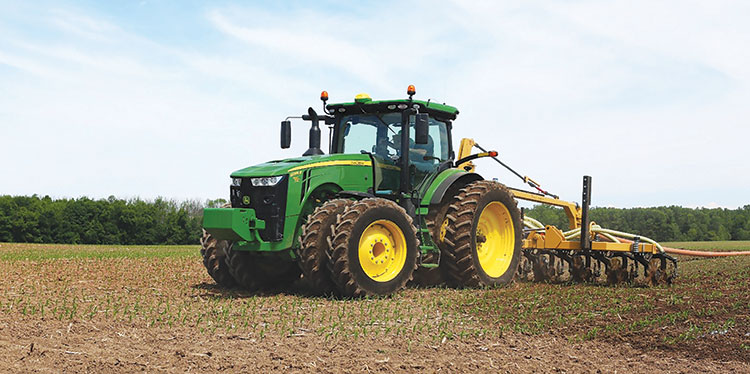
With the extreme weather events in recent years, dairy farmers in certain parts of the country have had a difficult time emptying their manure pits before the winter freeze. Continuous rainfall during the critical weeks of planting and harvest has been a common trend in some areas.
A race against time
Corn silage is the number one ingredient in most dairy herd diets. In the fall, a large amount of liquid dairy manure is applied to these harvested corn silage fields. In the Upper Midwest, harvest typically begins in early September, or late August in the occasional dry year. However, late-spring planting and heavy rains in August and September 2019 pushed back harvest start dates, resulting in delayed manure application.
A substantial amount of manure needs to be spread during this shortened time period between harvest and winter. Due to a combination of saturated soils and heavy manure application, there has been an elevated number of manure spills and runoff incidents. This has created surface and potentially groundwater quality contamination.
A study conducted in the Upper Midwest by UW-Discovery Farms and collaborators assessed monthly nitrogen loss to tile drains of fall applied manure compared to spring applied manure. The soil types and application rates varied between the multiple test sites, but the average total nitrogen loss for one year of fall applied manure was 48 pounds per acre, while the spring applied manure averaged a loss of 26 pounds per acre.
Consider other options
Because of this reoccurring issue, dairy farmers will have to consider other options to widen the window for manure application. Cropping systems may have to change, such as planting shorter maturity corn for an earlier harvest or planting alternative forages that allow for manure to be applied throughout the year.
Applying manure to a growing corn crop is another option. This strategy not only relieves manure storage capacity, but it can be utilized as a great source of nutrients for growing corn.
Ohio State University Field Specialist Glen Arnold has conducted research on multiple aspects of applying manure to growing corn. One project looked at drag hose application methods and evaluated which growth stage of corn can receive the application without yield loss.
After reviewing the results over
a five-year trial, Arnold stated “corn could be sidedressed with liquid livestock manure using a drag hose up
to growth stage V4 without a yield loss.” By V5 stage, over half of the stalks were snapped and did not produce a high-yielding crop. See Table 2 for details.

When applied at stage V3 (manure tested to meet nitrogen needs), the sidedressed-incorporated dairy manure yielded higher than the 28% urea ammonium nitrate (UAN) plots and surface applied manure plots. More information on OSU Extension’s manure sidedress research can be found at: agcrops.osu.edu.
Working with growing corn
Extension in Calumet County brought this idea to Wisconsin and collaborated with industry partners to analyze various techniques to sidedress manure to a corn crop at growth stage V2 to V3. This included: 1) dragline at a traditional angle with a splash pan; 2) dragline at a traditional angle with a dribble bar; 3) dragline with the rows with an incorporating toolbar; 4) incorporation with tractor tanker; and 5) dribble application with an Agrometer. More details of this on-farm trial can be found at bit.ly/JNM-CalumetCoExt.
Farmers who consider utilizing manure on their V1 to V4 stage cornfields should acknowledge that there are soil and weather conditions that can play a role in yield results. A firm seedbed can be created with cover crops and no-tilled soil, which is ideal for dragging hose over corn. If the field is saturated from a recent rainfall, the drag hose may pull the corn stalks out of the soil.
Dry matter content in the manure should also be considered. Thick manure, surface-applied at a heavy rate, followed by no precipitation, could potentially burn the corn crop. There is also the possibility of losing available nitrogen when manure is surface-applied as opposed to incorporated, as it can volatilize from the surface. Other variables such as the type of tire to use while applying the manure and the size of a drag hose should be noted.
Farmers and manure applicators potentially have a win-win situation with this strategy of growing-crop manure application. It gives them an extra opportunity to apply manure to a crop that can utilize its nutrients at the time it needs it most, during the growing season.
Farms may be able to reduce synthetic fertilizer expenses if they can use manure as their main source of nitrogen. Finally, many nutrient management plans allow for more gallons of manure to be applied to a field if there is an established growing crop.
This article appeared in the May 2020 issue of Journal of Nutrient Management on pages 20 and 21.
Not a subscriber? Click to get the print magazine.



